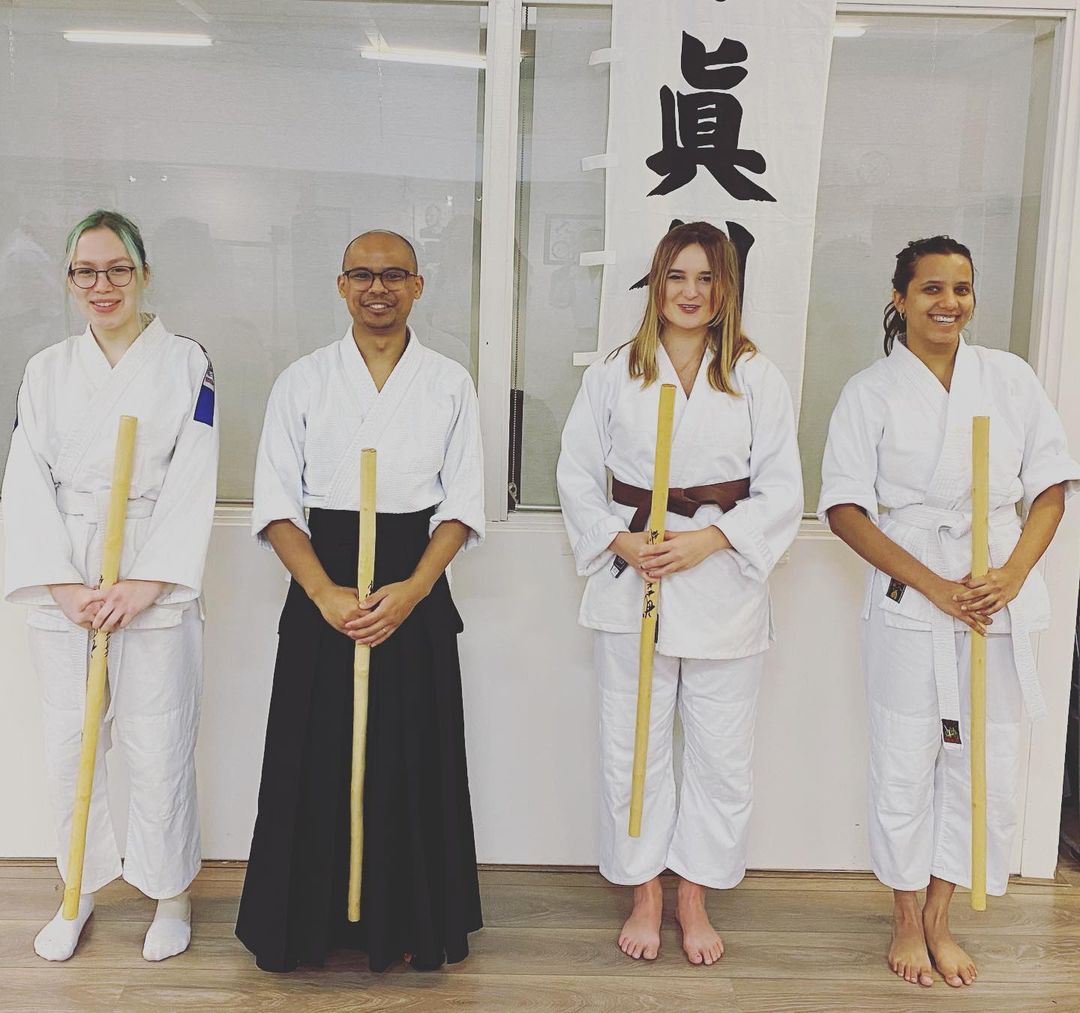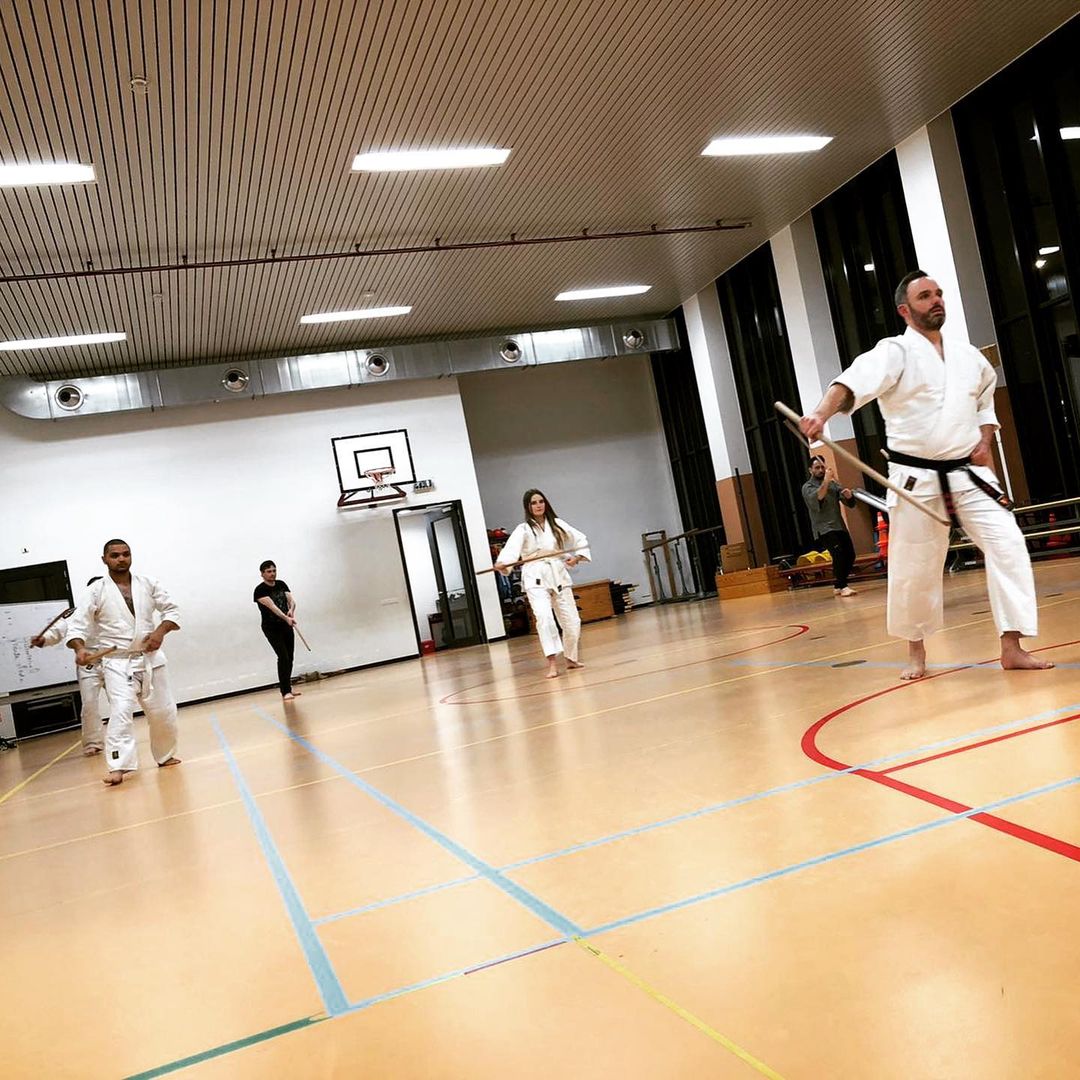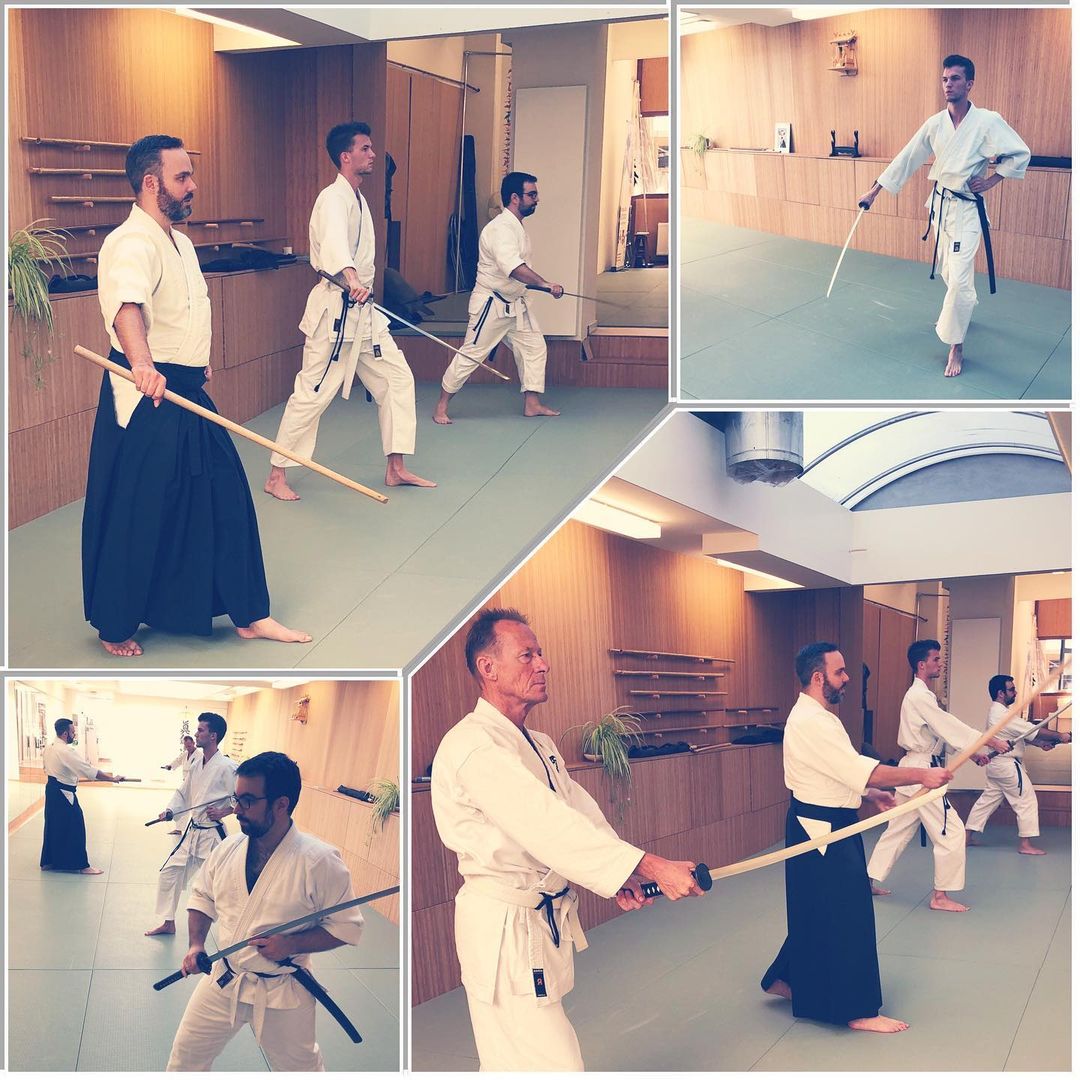About Shinkendo

About Shinkendo
Suburi – Sword and Body MovementSuburi means sword swinging practice. In Shinkendo this term is used to define basic sword movements, correct footwork and body movement practices. These fundamentals are crucial to proper training and must never be neglected.
Tanrengata – Solo FormsThe main solo forms practiced in Shinkendo are called Tanrengata. The term "Tanren" also refers to the process of removing the impurities in metal when forging a sword. Shinkendo kata emphasize fluid movement, graceful balance shifting and effective body/sword mechanics.
Battoho - Drawing the BladeShinkendo teaches how to draw the sword combatively, and re-sheath it safely. This training is called Battoho. Students begin practice with a wooden sword and learn to draw effectively in many directions. Advanced students later use an Iaito, or non-sharpened practice sword and later use a Shinken, or real sword (live blade).
Techniques done from a sitting position (Suwari Iai) are very common in other schools, but are not used in Shinkendo. These techniques are impractical and unsafe with a long blade. Instead, Shinkendo draws are done from the traditional Fudo (standing) or Tachiaigoshi (crouch, or ready stance) positions.
Tachiuchi - Partnered Sparring ExercisesKoryu Kenjutsu is a form of partnered training that starts when both participants already have their blades drawn. Many koryu kenjutsu styles still exist in Japan today. Training is usually done with a bokuto (wooden sword), but some styles also use a fukuro-shinai (padded bamboo stick), to practice sparring techniques more safely. The important aspects of koryu kenjutsu are incorporated into Shinkendo as Tachiuchi, or two-person pre arranged sparring exercises.
Kendo is a form of sparring that utilizes bogu (armor) and practice with a shinai (bamboo sword), that came into existence near the end of the Edo period. After WWII, modern Kendo became more of a competition sport of hitting and thrusting, rather than true Budo. However, those valuable sparring tactics that are used in Kendo are incorporated into Shinkendo as variations in Tachiuchi.
Tameshigiri - Test CuttingTameshigiri is the practice of using real swords and target material to test the swordsman's accuracy and form. This requires a great deal of concentration and skill, and is usually done only by well-trained students under direct supervision.
Test-cutting is only one aspect of swordsmanship training, and should not be viewed as the sole purpose of training or done for entertainment or sport. The practice of cutting inappropriate materials such as fruit, water bottles or other 'circus acts' should be strongly discouraged. Japanese Swordsmanship should always be approached with dignity and sincerity.
More information can be found on the official Shinkendo website.


